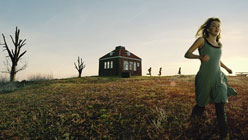Welcome to Help Desk, where I answer your queries about making, exhibiting, finding, marketing, buying, selling — or any other activity related to — contemporary art. Together, we’ll sort through some of art’s thornier issues. Email helpdesk@dailyserving.com with your questions. All submissions remain strictly anonymous and become the property of Daily Serving.
I want to start applying for artists’ residencies and I don’t know where to begin. Is there a good place to find a listing of residencies, what are the best ones, and what advice could you give for putting together a stunning application?
Residencies can be an artist’s joy: time and space (and sometimes technical facilities) to make your work, a community of dedicated peers, and stimulating conversation. But beware: they can also be financially — and emotionally — draining environments where a bunch of alcoholic drama queens keep you up all night, every night, for a month, so you need to do some very careful research before you pack your bags.
There are a number of online resources for finding residency programs, from collective listings to the programs’ own sites, so begin with some basic searches. I also suggest that you start semi-local: you might have a better chance of getting in, and you’ll be able to test the waters without having to sublet your apartment and move to another state or country for a few months. Try googling “[your state] artist residency” to see what comes up — my trial search for California returned a ton of opportunities. To find international residencies you can use the same Google search with the name of the city or country you’d like to go to, or you can find sites like ResArtis.org and Residency Unlimited that list international residency programs and their deadlines.



